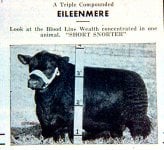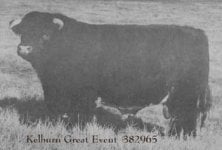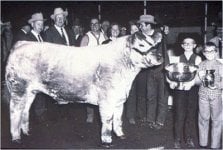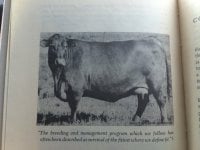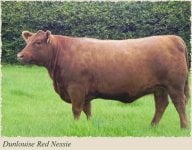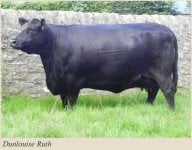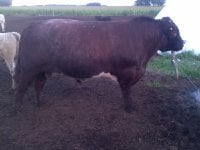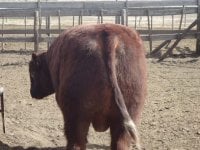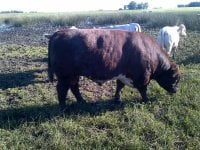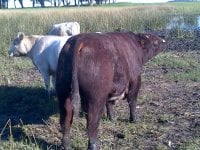librarian
Well-known member
This is the ridiculous extreme, and a dwarf carrier, it seems.
I think the frame sizes were around 2. The sire of the angus bull I pictured was a 3, to small I think, and I sold him.
Her is something interesting about Native Aberdeen Angus cattle from Scotland and the traditional type. Easy fleshing and carcass quality seem to be the hallmarks.
http://www.sinclaircattle.com/scotland_all.php?list=archive
At that time Geordie had two native Aberdeen Angus cows, and there were only 16 of these native animals left in existence. Immediately I knew the native Scottish cattle were exactly what I was looking for: Very deep-bodied, early-maturing, medium- to moderate-framed, extremely easy-fleshing, with tremendous vital organ capacity, and superior eating quality. They were the same maternal breed that, at the turn of the 20th Century, also had the ability to come to the carcass contest in Chicago and win year after year.
Keep in mind that the cattle that started the breed in Scotland were very different from the belt buckle cattle that most Americans think of as the foundation of the Angus breed. Geordie's cattle actually possessed the same characteristics that made the Angus breed Scotland's greatest export.
I think the frame sizes were around 2. The sire of the angus bull I pictured was a 3, to small I think, and I sold him.
Her is something interesting about Native Aberdeen Angus cattle from Scotland and the traditional type. Easy fleshing and carcass quality seem to be the hallmarks.
http://www.sinclaircattle.com/scotland_all.php?list=archive
At that time Geordie had two native Aberdeen Angus cows, and there were only 16 of these native animals left in existence. Immediately I knew the native Scottish cattle were exactly what I was looking for: Very deep-bodied, early-maturing, medium- to moderate-framed, extremely easy-fleshing, with tremendous vital organ capacity, and superior eating quality. They were the same maternal breed that, at the turn of the 20th Century, also had the ability to come to the carcass contest in Chicago and win year after year.
Keep in mind that the cattle that started the breed in Scotland were very different from the belt buckle cattle that most Americans think of as the foundation of the Angus breed. Geordie's cattle actually possessed the same characteristics that made the Angus breed Scotland's greatest export.

